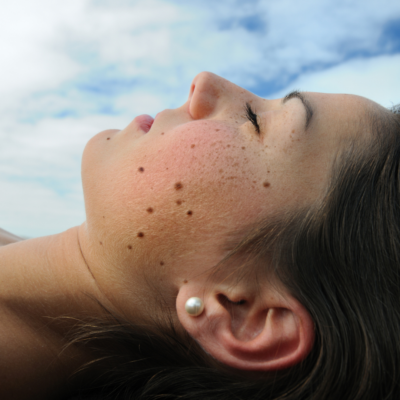A Timely Message About Your Skin and Vitamin D
One of December’s special days is Winter Solstice, the darkest day of the year and the official start of winter. As daylight reaches its shortest point, it’s time to be mindful of balancing your skin’s need for sun protection with your body’s need for vitamin D, often called “the sunshine vitamin.”
Why is Vitamin D Important?
Vitamin D partners with the mineral, calcium, to help keep bones healthy. All the calcium you take in might be wasted without vitamin D to make sure it gets absorbed into your system. Vitamin D also works with specialized cells called osteoblasts and osteoclasts to turn calcium into new bone mass.
Tiny Tim May Have Suffered from Vitamin D Deficiency
Vitamin D deficiency in adults can contribute to osteoporosis and in children, can cause rickets. It is suspected that rickets was the cause of Tiny Tim’s illness in A Christmas Carol. During the Industrial Revolution, smokestacks began to block the sky and city children could no longer get enough sunlight to support the growth of their bones. The ensuing epidemic of rickets prompted the U.S., Great Britain and other industrializing countries to fortify foods, like milk, with vitamin D as a public health measure.
To this day, milk in the U.S. is fortified with 400 International Units (IU) of vitamin D per quart. So are many of the plant-based alternatives including soy milk, almond milk and oat milk. However, foods made from milk, such as cheese or ice cream, are usually not fortified.
The Pros and Cons of Vitamin D from Sunlight
There are differing views on optimal intake of vitamin D. On the one hand, sunlight seems to be the perfect delivery system for vitamin D. That’s because your body regulates how much vitamin D it makes from sunlight depending on how much you need. It is like when you are filling up your car with gas and the pump automatically stops when your tank is full. There is little chance of vitamin D approaching levels of toxicity, as opposed to taking over-the-counter vitamin D supplements. Unlike vitamins B and C that are water soluble and simply flushed away by your system if you get too much, vitamin D is a fat-soluble vitamin. Excess can build up in your tissue and can lead to problems such as painful calcium stones in your kidneys.
On the other hand, because ultraviolet rays from the sun can cause skin cancer, the American Academy of Dermatology does not recommend getting your vitamin D from sun exposure. In addition to being a major risk factor for skin cancer, unprotected exposure to UV rays from the sun is also the leading cause of premature aging of the skin. Lines, creases, leathery texture and dark spots and patches of hyperpigmentation are the results of unprotected time in the sun.
How Much Vitamin D You Need and How to Get It
The amount of vitamin D you need depends on your age. Older adults need the most to make up for the decline in their body’s ability to process vitamin D.
The current recommendations from the Institute of Medicine for daily intake are:
- 400 IU for infants/children 0-1 years
- 600 IU for children, teenagers and adults 1-70 years
- 800 IU for adults 71+ years
The American Academy of Dermatology recommends protecting your skin from sun exposure and getting vitamin D from a healthy diet that includes foods naturally rich in vitamin D, foods and beverages fortified with vitamin D, and/or vitamin D supplements. Your California Skin Institute board-certified dermatologist can recommend the right level of vitamin D supplementation to meet your individual needs.



 / 291 Reviews
/ 291 Reviews